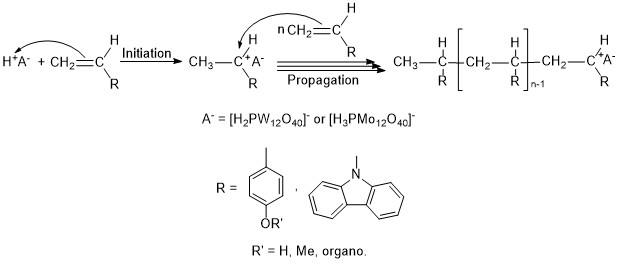Polymers based on p-hydroxystyrene (PHOS) are useful in electronics applications; however, the direct polymerization of this monomer by the cationic technique can be challenging.1 Our research group has discovered that heteropolyacids (HPAs) can effect the cationic polymerization of other olefins (e.g., p-methoxystyrene (PMOS)) to afford high MW polymers in water. Phosphotungstic acid is one such acid which is preferred; however, other HPAs (e.g., 12-molybdophosphoric acid) can also be used. The heteropolyacid solution is infinitely recyclable as it retains its activity indefinitely. Using this methodology should allow for the production of poly(p-hydroxystyrene) as well as the production of copolymers containing this monomer. An example of this approach is embodied in Scheme 1.
Scheme 1. Aqueous polymerization of p-hydroxystyrene and other olefins as induced by heteropolyacids.

References
